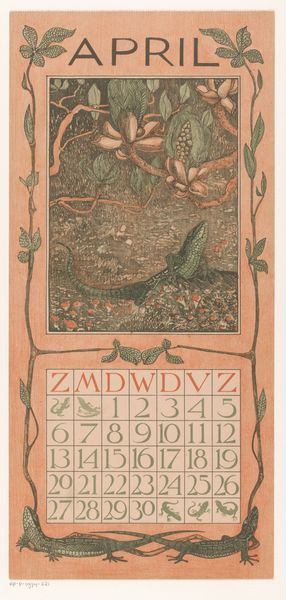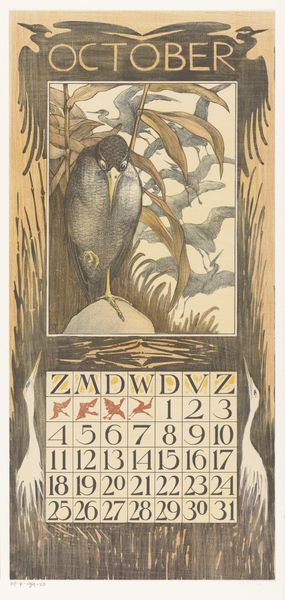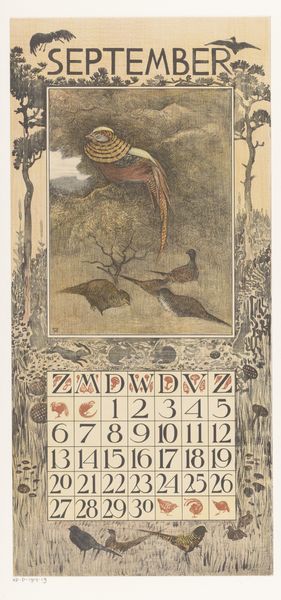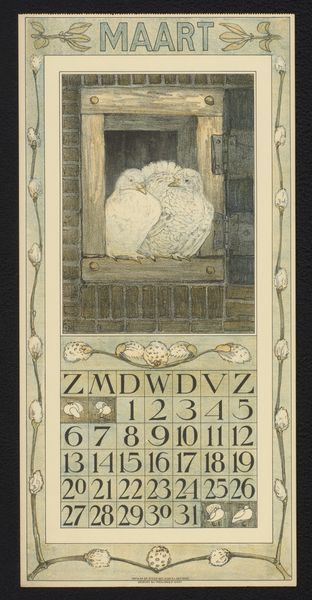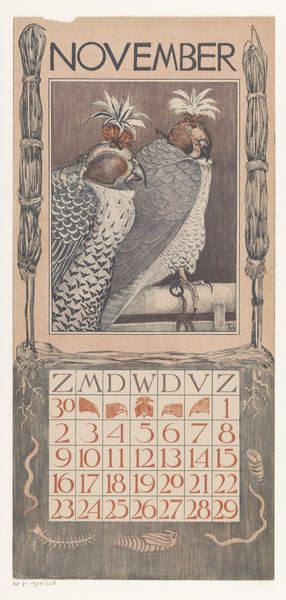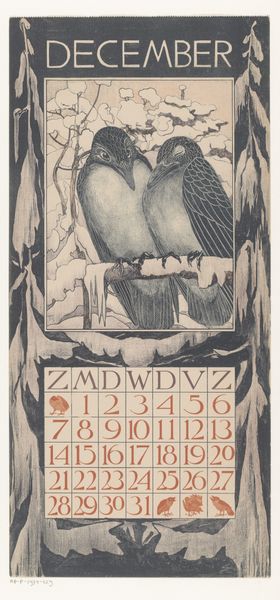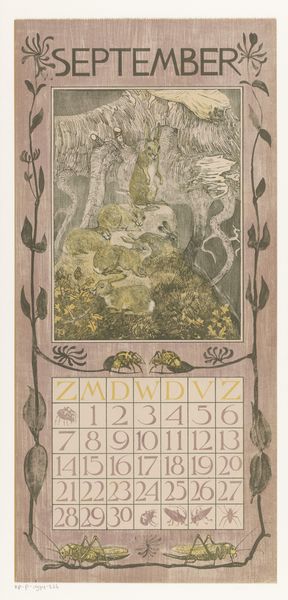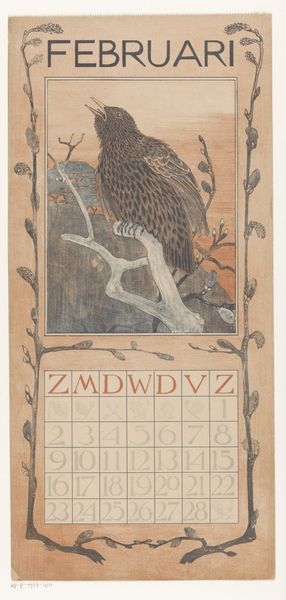
print, woodcut
#
art-nouveau
#
animal
# print
#
landscape
#
linocut print
#
woodcut
Dimensions: height 450 mm, width 210 mm
Copyright: Rijks Museum: Open Domain
Curator: Theo van Hoytema, known for his distinctive take on Art Nouveau, crafted this calendar sheet for March in 1902. It's a print, incorporating linocut and woodcut techniques, currently held here at the Rijksmuseum. Editor: I'm immediately struck by its gentle, almost nostalgic air. It feels like flipping through an old book of fairy tales. The color palette is subdued, a blend of earthy browns, soft greens and pale creams...It’s peaceful, wouldn't you agree? Curator: Yes, absolutely. The storks, of course, carry strong symbolic weight – traditionally associated with springtime, new beginnings, and fertility. And consider its design as a calendar; it marks the passage of time with symbols of natural renewal, a continuous cycle. Editor: Those storks perched atop that wonky-looking brick chimney...It's almost whimsical, a stork apartment complex! I can just imagine them gossiping about the neighborhood goings-on. It makes me smile to think that such imagery adorned someone’s wall. The way the roots kind of engulf and almost strangle the numerical calendar gives the passing of time a somewhat organic, earthly element. Curator: Precisely. And van Hoytema wasn’t just interested in superficial aesthetics. He was fascinated by ornithology and carefully studied birds. You'll notice he combines this scientific precision with stylized Art Nouveau elements in the decorative border of frogs, for instance. They function almost as counterpoints to the lofty storks. Editor: Absolutely, like looking into another world right at our feet. There’s a contrast to their positioning at the very base of the artwork in pairs and facing one another with their bulgy little eyes – this lends to a humorous aspect. One’s reminded of spring and the great unfolding of life and what’s unseen beneath it all in tandem. What do you make of the empty calendar spaces, those end of the month stork miniatures for the days ending in 29, 30, 31? It feels so light-hearted, and playful almost as a bonus reward to all that anticipate their favorite upcoming days or seasonal times. Curator: You've hit upon something significant there. These little birds operate as additional motifs of time in and of itself. But most generally calendars serve as a symbolic contract, with spring and rebirth and hope being eternal human motifs across diverse societies. I daresay such symbolic association might even extend far back into our human origins… Editor: The mind boggles to contemplate the myriad cultural permutations! Thinking of Van Hoytema and the cycle of it all - nature, artistry, and time – I just appreciate how something so functional like a calendar can become a thing of delicate, quiet beauty, an artwork in its own right. Curator: Agreed. I appreciate that it manages to capture that delicate balance so very well.
Comments
No comments
Be the first to comment and join the conversation on the ultimate creative platform.
